Discover 20 hidden attractions, cool sights, and unusual things to do in Liège (Belgium). Don't miss out on these must-see attractions: Liège Cathedral, Grand Curtius, and St Martin's Basilica. Also, be sure to include Prince-Bishops' Palace in your itinerary.
Below, you can find the list of the most amazing places you should visit in Liège (Wallonie).
Table of Contents
Liège Cathedral

Also known as: Cathédrale Saint-Paul de Liège
Gothic-style church with a cloister. Liège Cathedral, otherwise St. Paul's Cathedral, Liège, in Liège, Belgium, is part of the religious heritage of Liège. Founded in the 10th century, it was rebuilt from the 13th to the 15th century and restored in the mid-19th century. It became a Catholic cathedral in the 19th century due to the destruction of Saint Lambert's Cathedral in 1795. It is the seat of the Diocese of Liège.[1]
Address: Place de la Cathédrale 6, 4000 Liège (Liège)
Grand Curtius
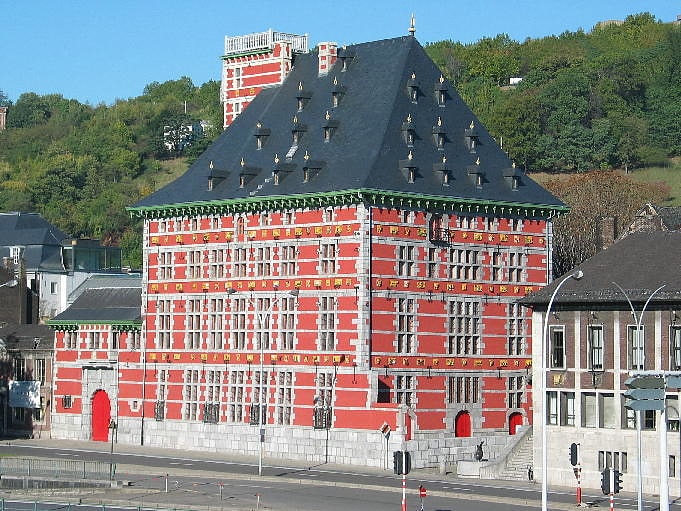
Archeology and decorative arts museum. The Curtius Museum is a museum of archaeology and decorative arts, located on the bank of the river Meuse in Liège, classified as a Major Heritage of Wallonia.
It was built sometime between 1597 and 1610 as a private mansion for Jean Curtius, industrialist and munitions supplier to the Spanish army. With its alternating layers of red brick and natural stone, and its cross-mullioned windows, the building typifies the regional style known as the Mosan (or Meuse) Renaissance.
After a 50 million euro redevelopment, the museum reopened as the Grand Curtius (Le Grand Curtius) in March 2009, now housing the merged collections of four former museums: the museum of archeology, the museum of weaponry, the museum of decorative arts, and the museum of religious art and Mosan art. Highlights in the collections include treasures of Mosan art such as a twelfth-century gilded reliquary triptych, formerly in the church of Sainte-Croix, the Evangelarium of Notger, sculptures by Jean Del Cour, and a portrait of Napoleon Bonaparte painted by Ingres in 1804: Bonaparte, First Consul.[2]
Address: Quai de Maestricht 13, 4000 Liège (Liège)
St Martin's Basilica
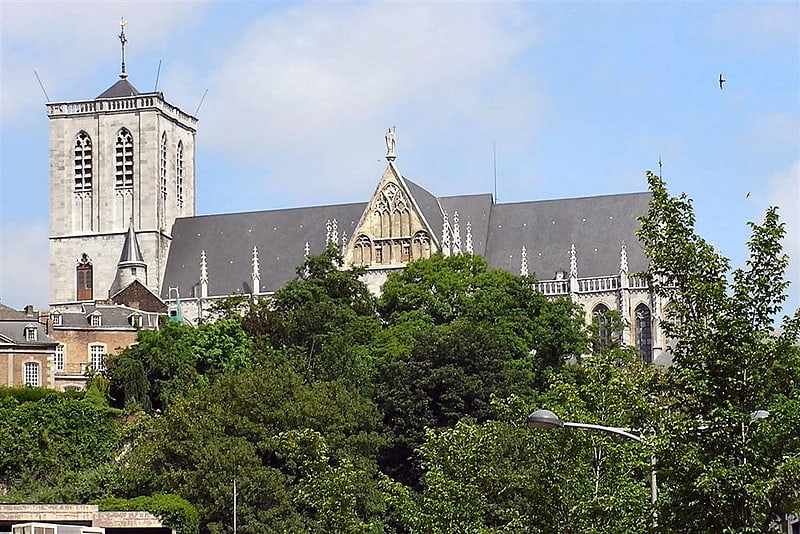
St Martin's Basilica in Liège, is a Roman Catholic church situated on the Publémont hill in the city centre. It was initially built as a Romanesque structure in the 10th century, which in 1246 held the first celebration of an annual 'Fête-Dieu', the festival later known as Corpus Christi. This structure was replaced by a Gothic building in the 16th century. Up until the Liège Revolution it was one of the seven collegiate churches of Liège. In 1886 it was promoted to the rank of minor basilica.[3]
Address: 66 Mont Saint-Martin, Liège (Liège)
Prince-Bishops' Palace
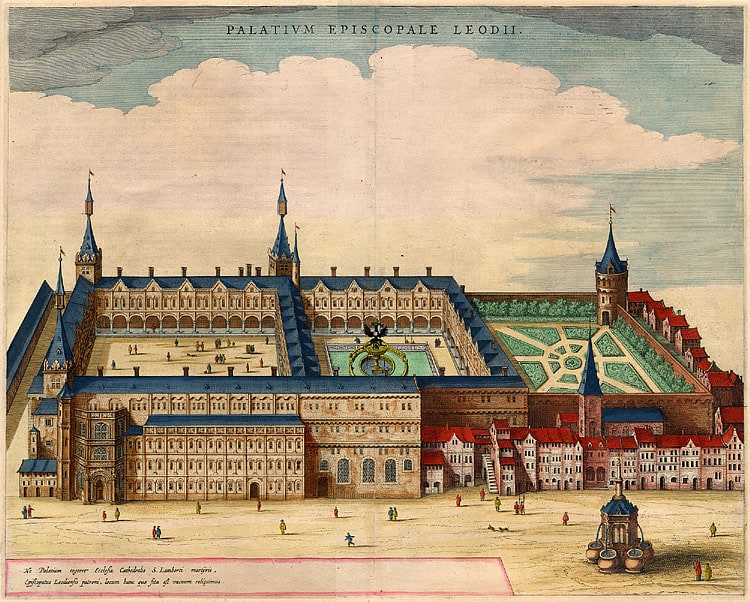
Also known as: Palais des princes-évêques de Liège
Tourist attraction in Liège, Belgium. The Palace of the Prince-Bishops is a historic building situated on the Place Saint-Lambert in the centre of Liège, Belgium. It was the residence of former Prince-Bishops of Liège. It once faced the monumental Cathedral of Saint Lambert.[4]
Montagne de Bueren
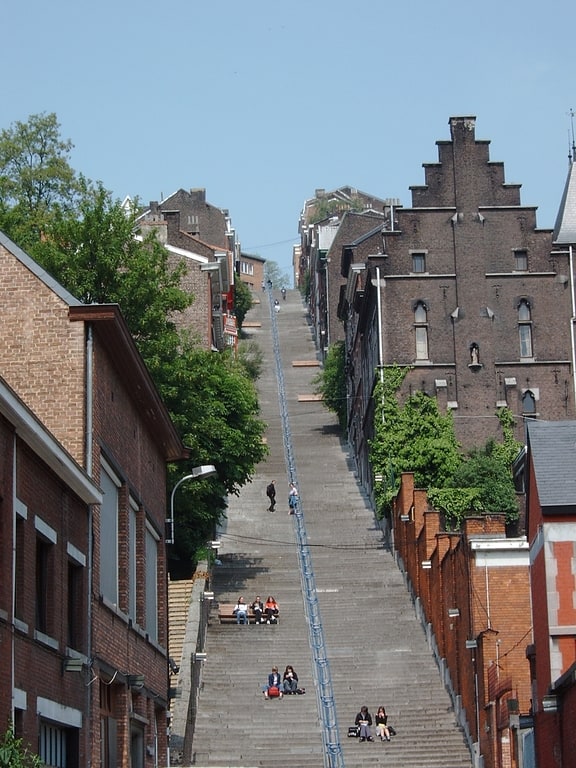
Tourist attraction in Liège, Belgium. Montagne de Bueren is a 374-step staircase in Liège, Belgium. The staircase is named after Vincent de Bueren, who defended Liège against an attack by the Duke of Burgundy, Charles the Bold in the 15th century. It was built in 1881 to honour the 600 soldiers who died in the battle.
In 2013, Montagne de Bueren was ranked as #1 on The Huffington Post's list of Most Extreme Staircases.
In July 2020, in response to the impact of the COVID-19 pandemic in Belgium, Belgian explorer and adventurer Louis-Philippe Loncke ascended and descended the staircase 135 times carrying a 15 kg backpack, simulating an ascent of Mount Everest. The 9000m climb, which took 65 hours 30 minutes, was meant to show that one could still "trouver des défis physiques près de chez soi" (find physical challenges close to home).[5]
Hôtel d'Ansembourg
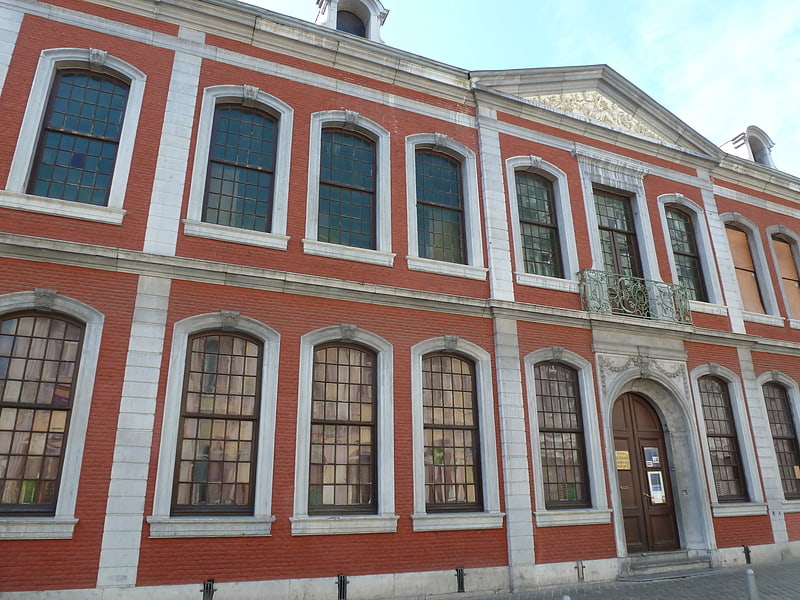
The Hôtel d'Ansembourg is a former Baroque hôtel particulier in Liège, Belgium, located between Féronstrée and quai de Maestricht.[6]
Address: Feronstrée 114, Liège (Liège)
Vesdre
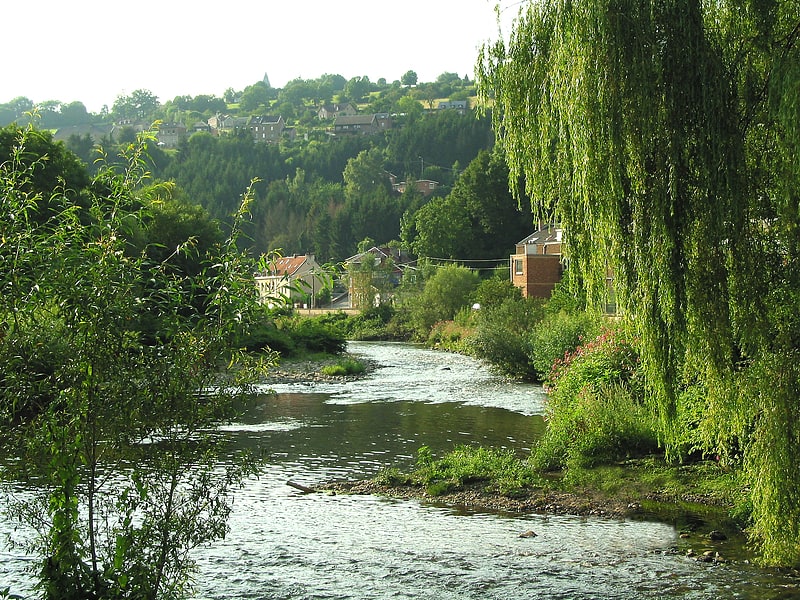
The Vesdre or Weser and Vesder is a river in Liège Province, eastern Belgium. A few kilometres of the upper reaches also flow through the German municipality Roetgen and form part of the Belgian–German border. The Vesdre's total length is approximately 64 kilometres. It is a right tributary to the river Ourthe. Its source lies in the High Fens, close to the border with Germany near Monschau. It flows through an artificial lake, and then through the towns of Eupen, Verviers, Pepinster and Chaudfontaine. The Vesdre flows into the Ourthe a few kilometres from Liège where the Ourthe in turn flows into the river Meuse.
The water of the Vesdre has a high acidity (due to the Hautes Fagnes bogs), which made it very suitable for the textiles industry around Verviers. The Vesdre was the far eastern end of the sillon industriel, the backbone of Walloon industry. Nowadays, the water of the Vesdre is mainly used as drinking water.[7]
Fort de Loncin
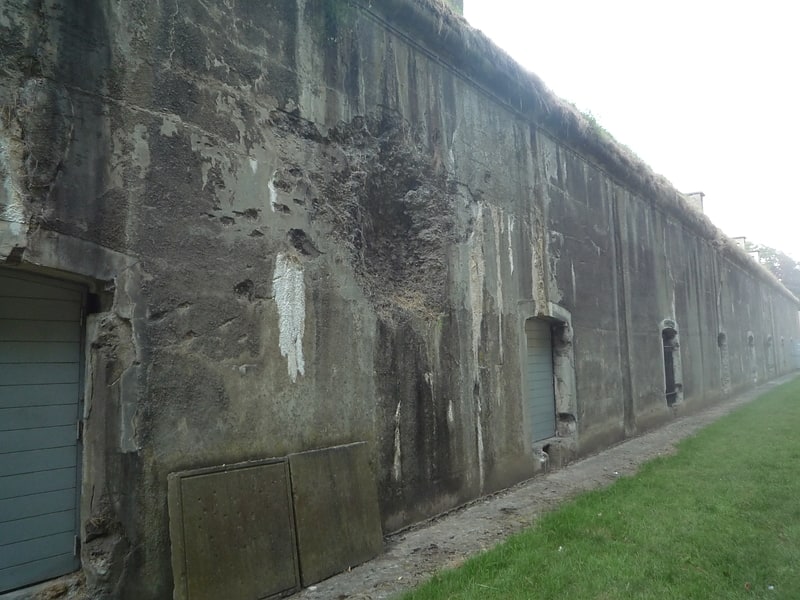
Historical landmark in Ans, Belgium. The Fort de Loncin is one of twelve forts built around Liège, Belgium, in the late 19th century. The overall Fortified Position of Liège was a constituent part of the country's National Redoubt. Fort de Loncin was constructed between 1881 and 1884 according to the plans of General Henri Alexis Brialmont. Contrasting with the French forts built in the same era by Raymond Adolphe Séré de Rivières, the fort was built exclusively of unreinforced concrete, a new material, rather than masonry.
The experimental nature of the new material, and the design features of the fort, led to unintended consequences in combat action. Weak concrete made the fort vulnerable to enemy artillery, while poor living conditions reduced the fort's ability to operate under fire.
The fort was destroyed during World War I in the Battle of Liège, when the fort's magazine was hit by a large-calibre German shell, killing most of the fort's occupants. The event marked the debut of the Big Bertha howitzer in combat. Relatively few of the dead were recovered; the site is now a military cemetery. The fort was never reused.[8]
Address: Rue des Heros 15bis, 4431 Ans
Collegiate Church of St. Bartholomew
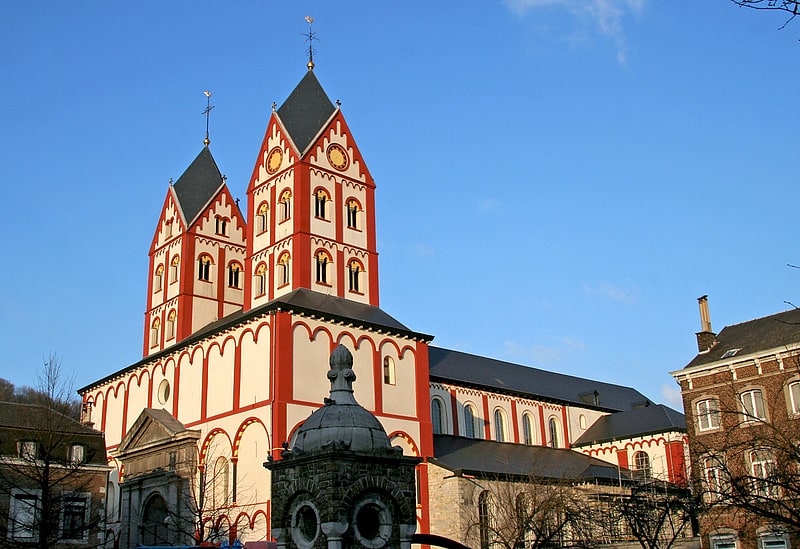
Also known as: Collégiale Saint-Barthélemy de Liège
11th-century church with red facade. The Collegiate Church of St. Bartholomew is an historical building in Liège, Belgium. Founded outside the city walls, it was built in coal sandstone, starting in the late 11th century and lasting until the late 12th century. It underwent, like most ancient religious buildings, modifications through the centuries. Nevertheless, the Meuse Romanesque—Ottonian architecture character of its architecture remained deeply rooted. The 18th century saw the addition of two more aisles, the opening of a neoclassical portal in the walls of the westwork, and the French Baroque redecoration of the interior. The interior of the western section has recently been restored back to the original style.
The Collegiate Church of St. Bartholomew was one of the original seven collegiate churches of Liège, which also included the Churches of St. Peter, St. Paul, St. John, St. Denis, St. Martin, and the Holy Cross, and until the Liège Revolution of 1789 collectively comprised the "secondary clergy" in the First Estate of the Prince-bishopric of Liège.
In 2006, the church emerged from heavy restoration work lasting seven years and involving 10,000 replaced stones and the restoration of the polychromy of the walls).[9]
Address: Place St Barthélémy 8, 4000 Liège (Liège)
Opéra Royal de Wallonie
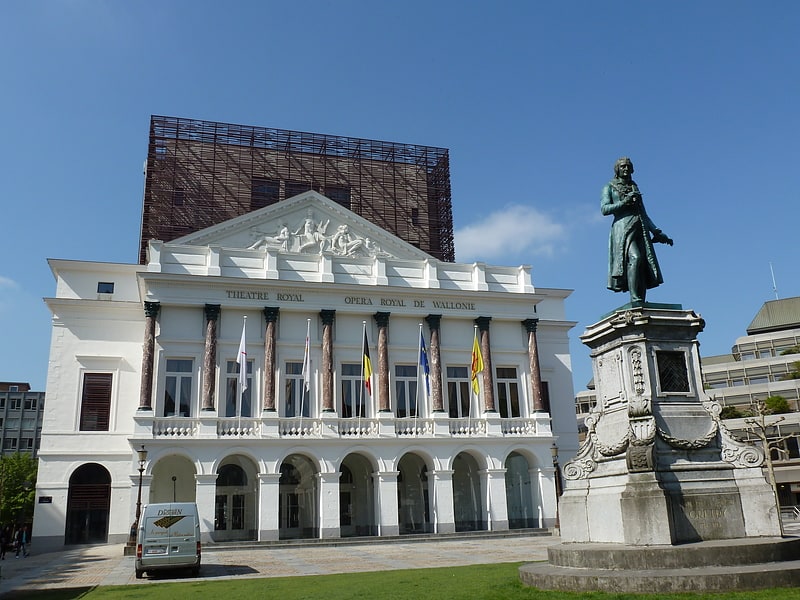
Also known as: Opéra royal de Wallonie
Opera house in Liège, Belgium. The Opéra royal de Wallonie is a Belgian Opera house located on the Place de l'Opéra, in Liège, Belgium. Together with La Monnaie and the Vlaamse Opera, the Opéra royal, as it is colloquially known, is one of the three major opera houses in Belgium. From the beginning, the institution occupied the Théâtre royal in Liège, a building loaned by the city.
Its geographical location, in the heart of the Euregio, at the crossroads between Germany, the Netherlands, the Grand Duchy of Luxembourg and France, attracts a large Belgian and international audience.[10]
Address: Place de l'Opéra, 4000 Liège (Liège)
Place Saint-Lambert
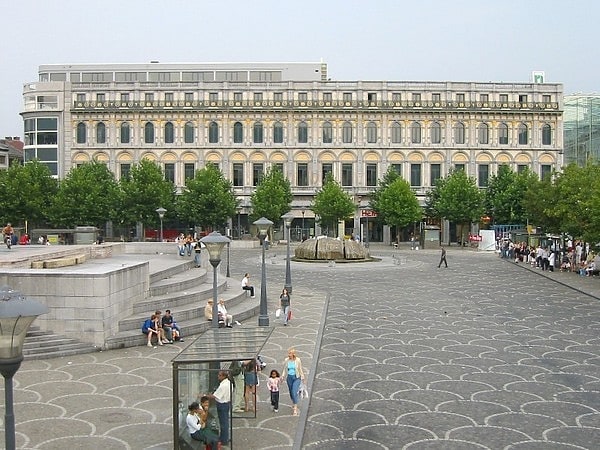
The Place Saint-Lambert is a square in the centre of Liège, Belgium. Until 1794, it was the site of St. Lambert's Cathedral. Remains of the foundations of the cathedral have been conserved, and are on display at the Archéoforum, under the square. The largest public building on the square is the former Prince-Bishops' Palace, which now houses the Palais de justice and the Palais provincial, i.e. the government building of the province of Liège. There is a large bus station in the lower part of the square, which serves as the local transport hub for the city. On 13 December 2011, a murder–suicide attack took place in the square, in which 6 people were killed and 125 were injured.[11]
Address: Place St Lambert 27, 4000 Liège (Liège)
Fort de la Chartreuse
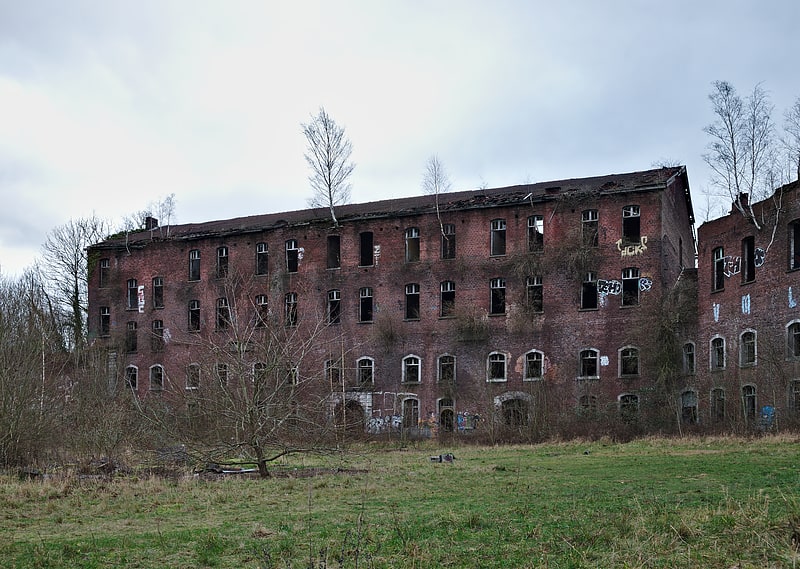
Historical landmark in Liège, Belgium. The Fort de la Chartreuse, which dominates the Amercœur neighborhood of Liège in Belgium, was built between 1817 and 1823 to defend the city.[12]
Waroux Castle
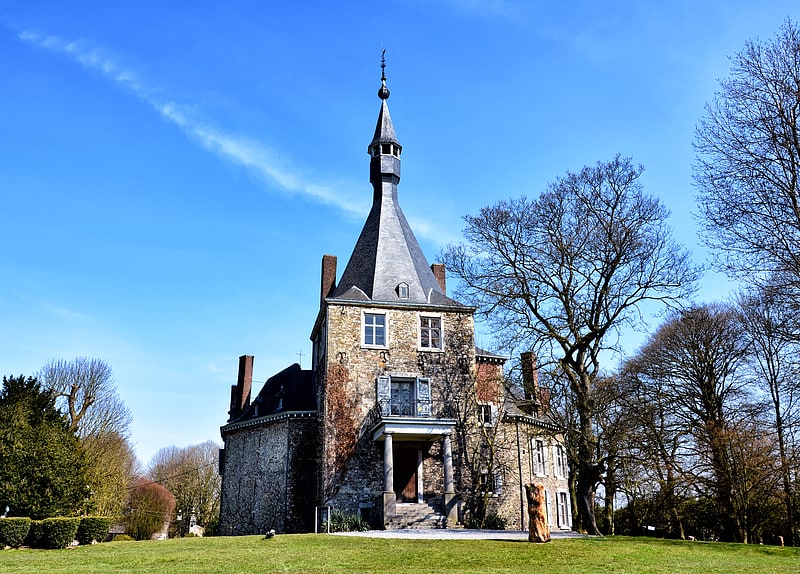
Also known as: Château de Waroux
Castle in Ans, Belgium. Waroux Castle is a castle in Belgium, located in the old region of Hesbaye, in the ancienne commune of Alleur, Ans, Liège Province, Wallonia.
Waroux was one of the rare circular castles in Belgium. The keep still remains of the medieval structure. For centuries it was the property of the de Waroux family until 1525, when it died by marriage. In 1696 it was apparently acquired by the De Clerkx de Waroux family, who remained the owners until 1925. The castle became the property of the commune of Ans in 2005.[13]
Address: Rue de Waroux 301, 4432 Ans
Coteaux de la Citadelle
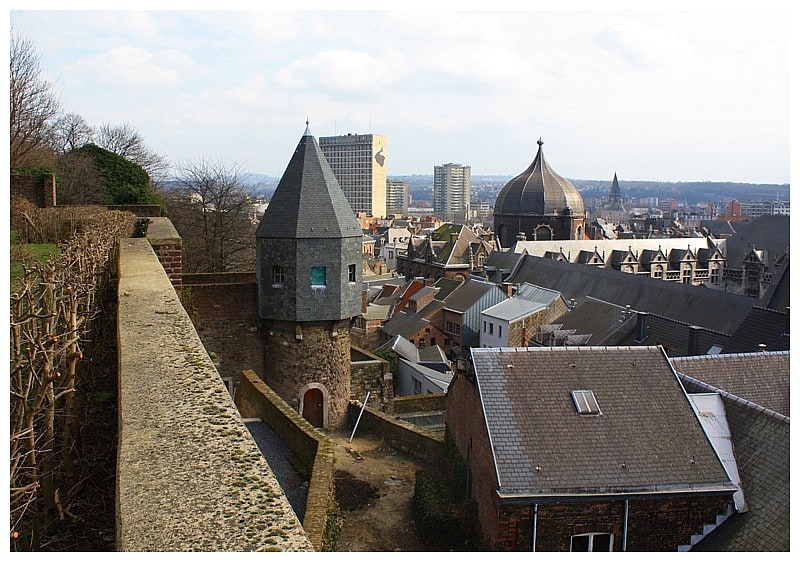
The Coteaux de la Citadelle is a rural area of more than 90 hectares located partly in the historic center of Liege, of which nearly half are classified as natural heritage by the Walloon Region. The site has more than sixty monuments classified as material heritage by the Walloon Region and includes 13 kilometers of signposted walks.
Collégiale Saint-Denis de Liège
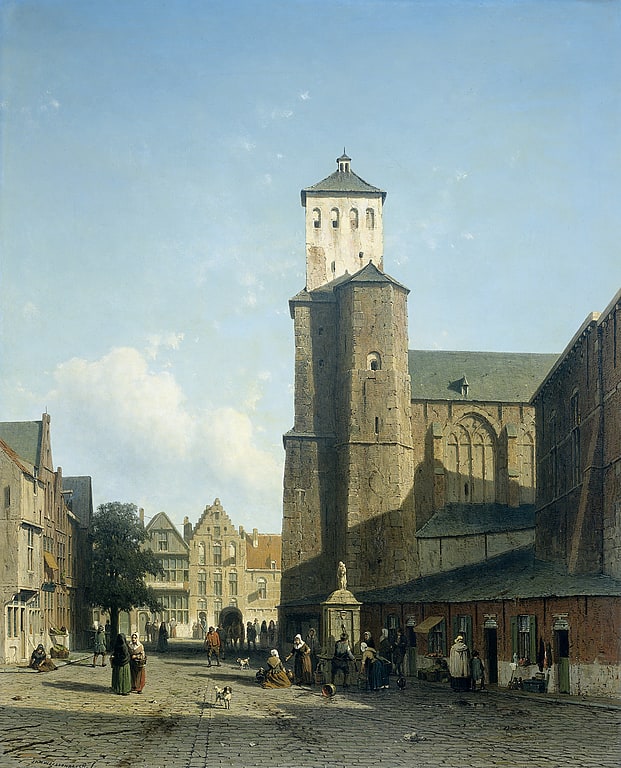
Catholic church in Liège, Belgium. The Church of St. Denis is a parish church in Liège, Belgium. The fortified building was designed to be part of the city's defences. It was founded by Notker of Liège in 987 and first consecrated on 12 March 990. The tower was added around 1100.[14]
Address: Rue de la Cathédrale 64, 4000 Liège (Liège)
Archéoforum
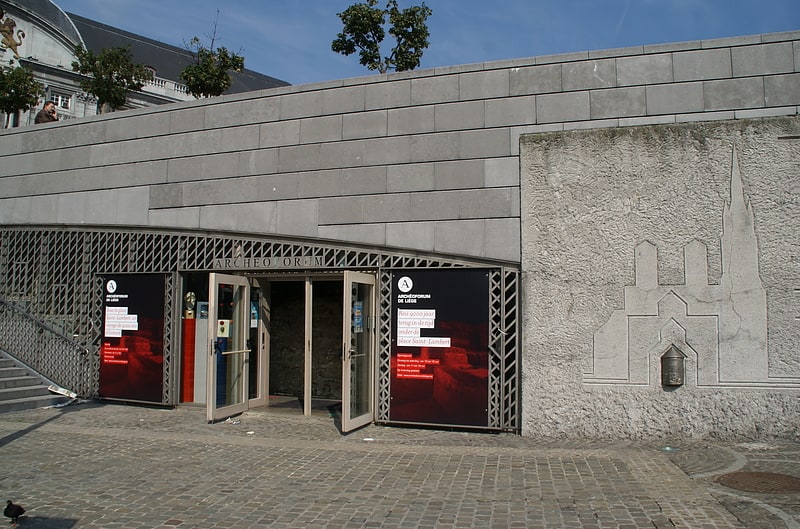
Also known as: Archéoforum
Museum in Liège, Belgium. The Archéoforum is an archaeological museum on place Saint-Lambert in Liège in Belgium. It is centered on the ruins of Saint Lambert's Cathedral and also includes the remains of a Gallo-Roman villa as well as displaying objects from the Mesolithic onward.[15]
Address: Place St Lambert, 4000 Liège (Liège)
Théâtre de Liège
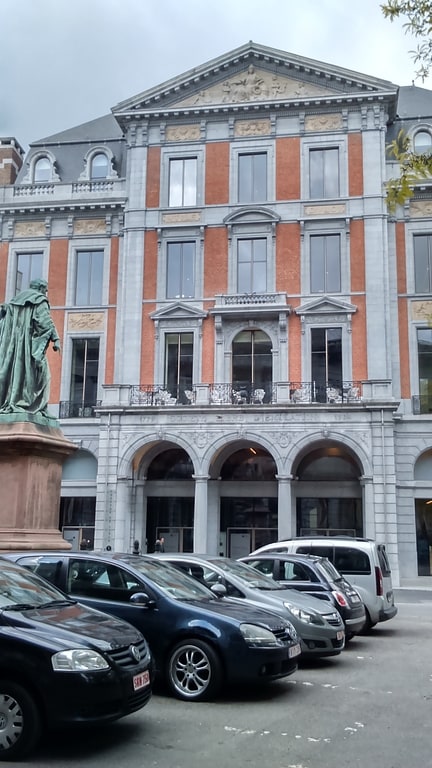
Theatre in Liège, Belgium. Théâtre de Liège is a theatre in Liège, Belgium.
The theatre briefly became the subject of notoriety in July 2015 after it was found that its logo, designed by local designer Olivier Debie, had been plagiarized by the designer of the emblem for the 2020 Summer Olympics in Tokyo. Debie filed a lawsuit against the International Olympic Committee to prevent use of the infringing logo, which was withdrawn in September 2015 and replaced by a new design.[16]
Address: Liège, Place Saint-Lambert
Pont-barrage de Monsin
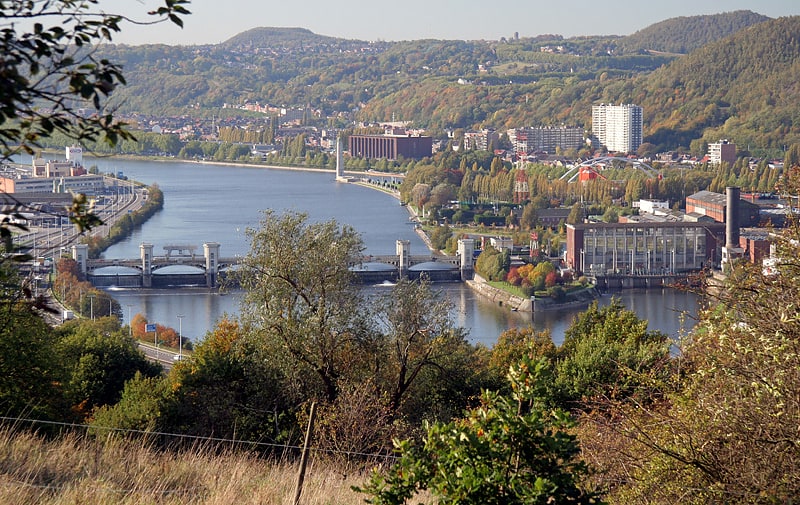
The Pont-barrage de Monsin, across the Meuse at Liège, Belgium, was inaugurated for the 1930 Liège International Exposition. The new structure permitted the replacement of several locks and to stabilize the course of the Meuse. It incorporates a hydro-electric plant. Work began on the project in 1928, with metal fabrications made locally by Cockerill. It was partly destroyed on 11 May 1940 during the Battle of Belgium.
The dam is topped by a road linking Jupille and the Port of Liège.[17]
Cointe Observatory
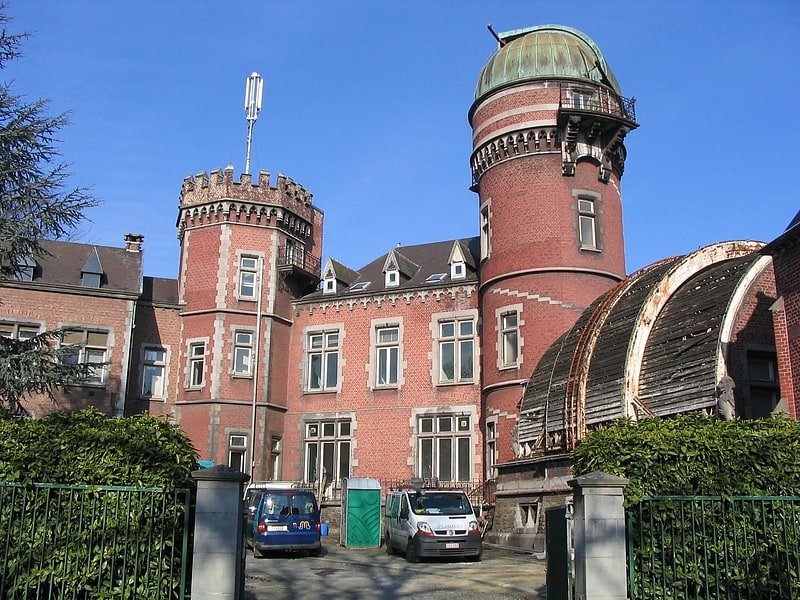
Also known as: Observatoire de Cointe
Astronomical observatory. Cointe Observatory, situated in the district of Cointe in Liège, Belgium, was built by the University of Liège in 1881-82 to plans by the architect Lambert Noppius.
The building, in a medieval revival style, is sited in a private park formerly the estate of the wealthy industrialist Vanderheyden de Hauzeur family. It accommodated the university's Institute of Astrophysics, later the Institute of Astrophysics and Geophysics, until 2002, when the Institute was moved to the Sart-Tilman campus.
As of 2008 the building was occupied by the Société Astronomique de Liège, but was in the course of renovation with the intention that it should house the Service Régional des Fouilles Archéologiques.[18]
Fort de Pontisse
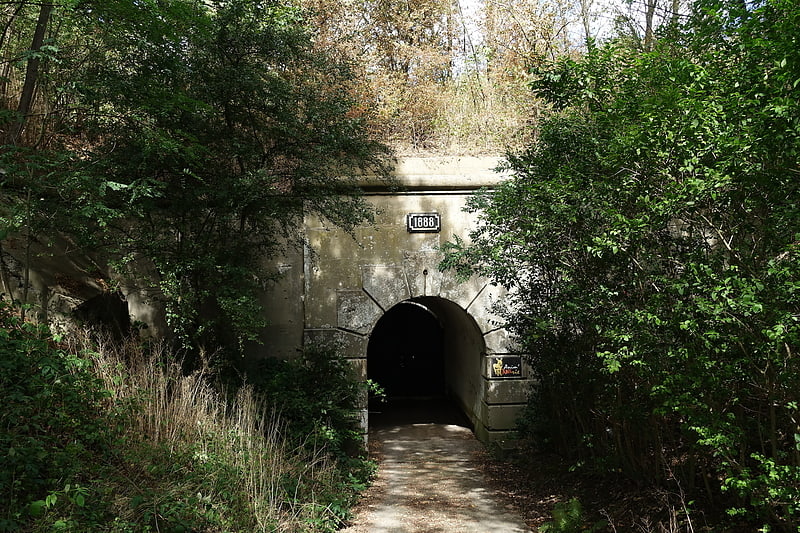
Historical place museum in Herstal, Belgium. The Fort de Pontisse is one of twelve forts built around Liège, Belgium, in the late 19th century. The overall Fortified Position of Liège was a constituent part of the country's National Redoubt. Fort de Pontisse was built between 1881 and 1884 according to the plans of General Henri Alexis Brialmont. Contrasting with the French forts built in the same era by Raymond Adolphe Séré de Rivières, the fort was built exclusively of unreinforced concrete, a new material, rather than masonry. The fort was heavily bombarded by German artillery in the Battle of Liège. Attacked in both World War I and World War II, the fort has been preserved as a refuge for bats, which may be visited during summer months.[19]